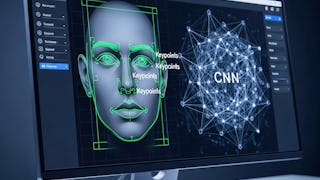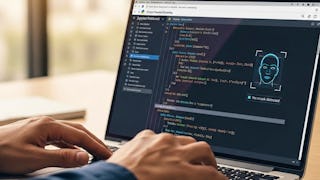Updated in May 2025.
This course now features Coursera Coach! A smarter way to learn with interactive, real-time conversations that help you test your knowledge, challenge assumptions, and deepen your understanding as you progress through the course. This comprehensive course guides you through the fascinating world of face recognition using Python. Starting with an introduction to face recognition concepts, you'll proceed to set up your environment using Anaconda and address any initial setup challenges. The course then delves into Python basics, ensuring you have the foundational knowledge required for more advanced topics. As you progress, you'll learn to implement face detection and recognition using the face_recognition and OpenCV libraries. The course covers real-time face detection from a webcam, video face detection, and various methods to handle common issues like cv2.imshow() not responding. By the end, you'll explore advanced topics such as facial expression detection, age, and gender classification, and even face makeup using face landmarks, solidifying your understanding and practical skills in computer vision. This course is ideal for beginners interested in computer vision and face recognition. A basic understanding of programming concepts is recommended but not required, as the course covers Python basics. Whether you're aiming to enhance your technical skills or embark on a new career path, this course provides the tools and knowledge you need to succeed in the field of face recognition and computer vision.















